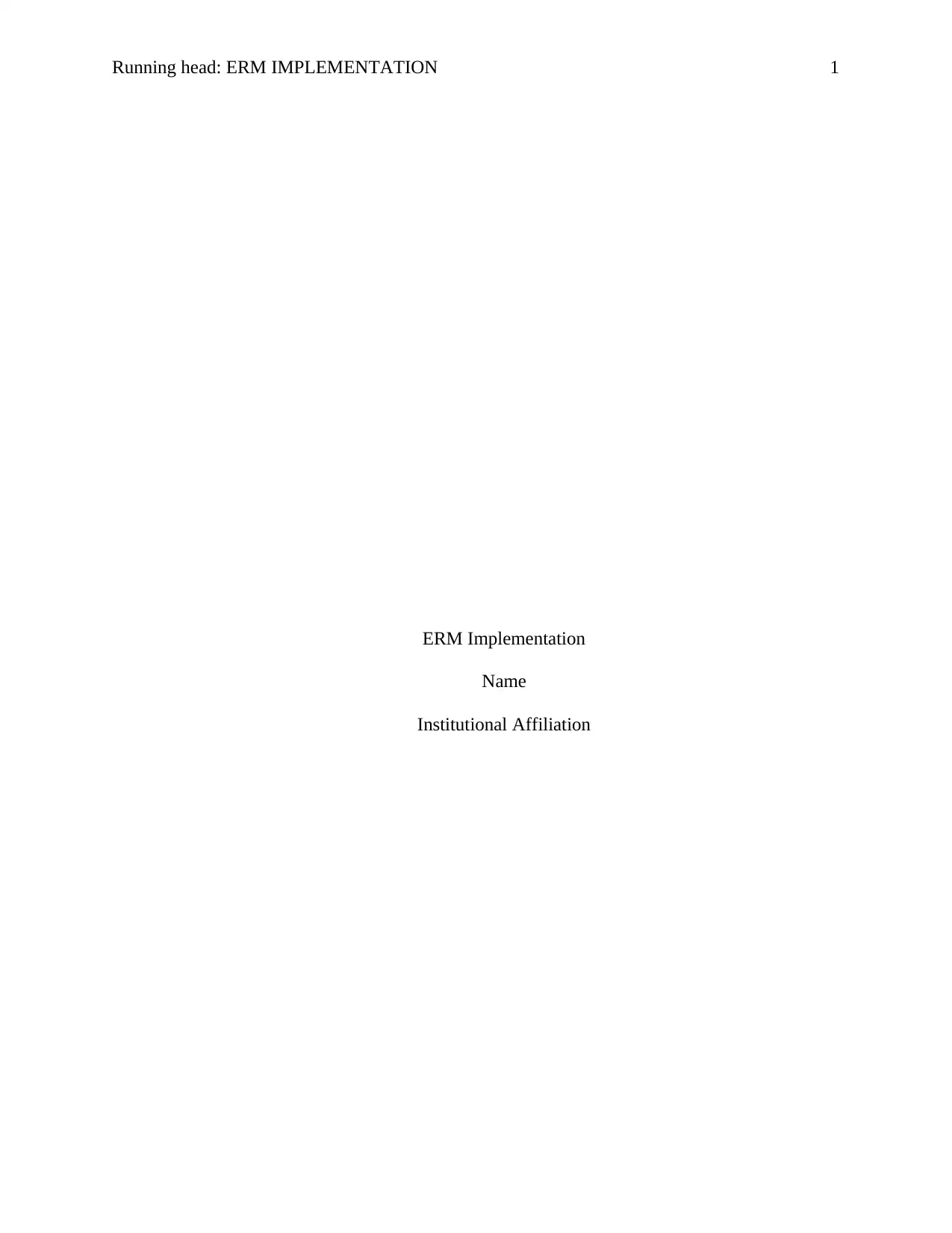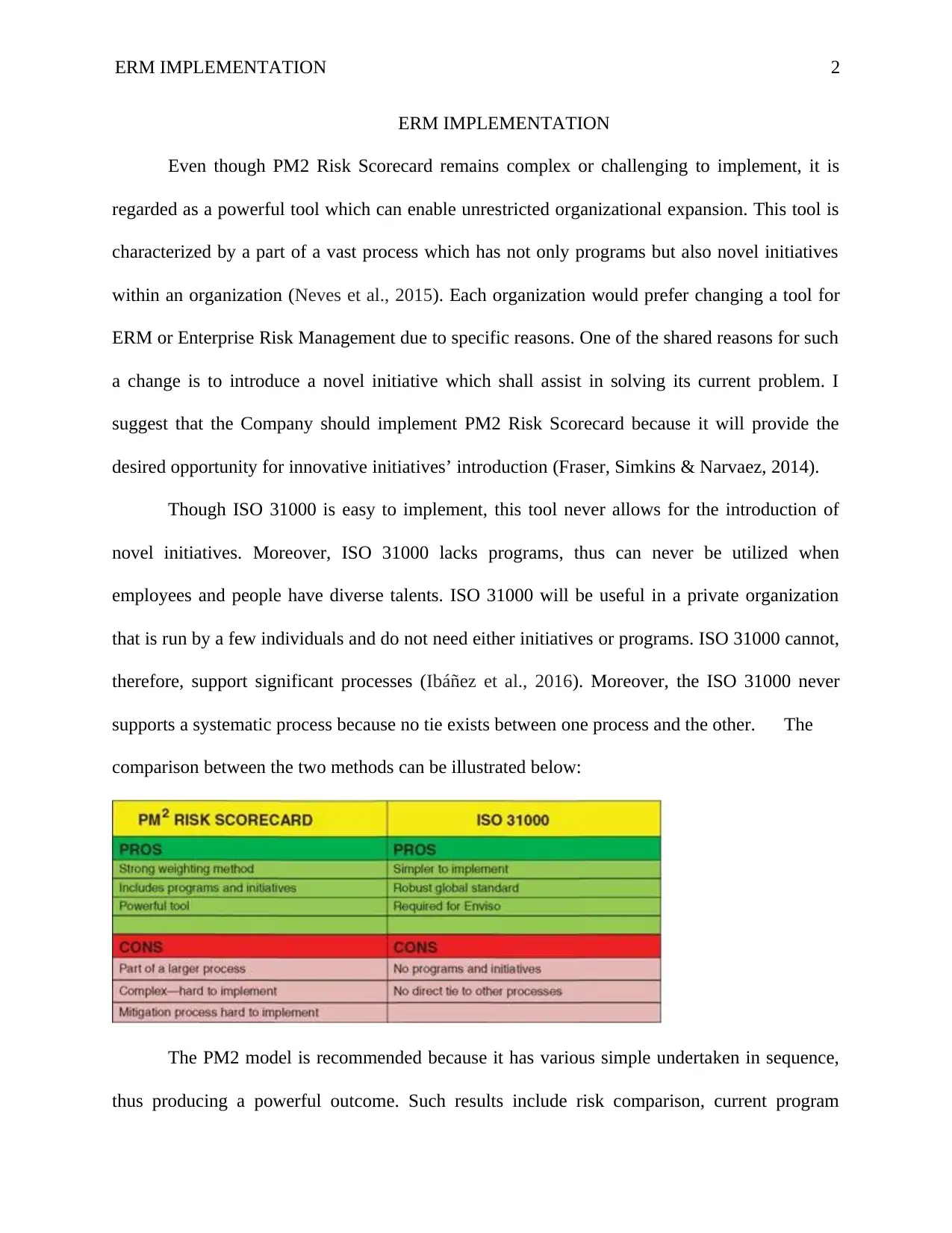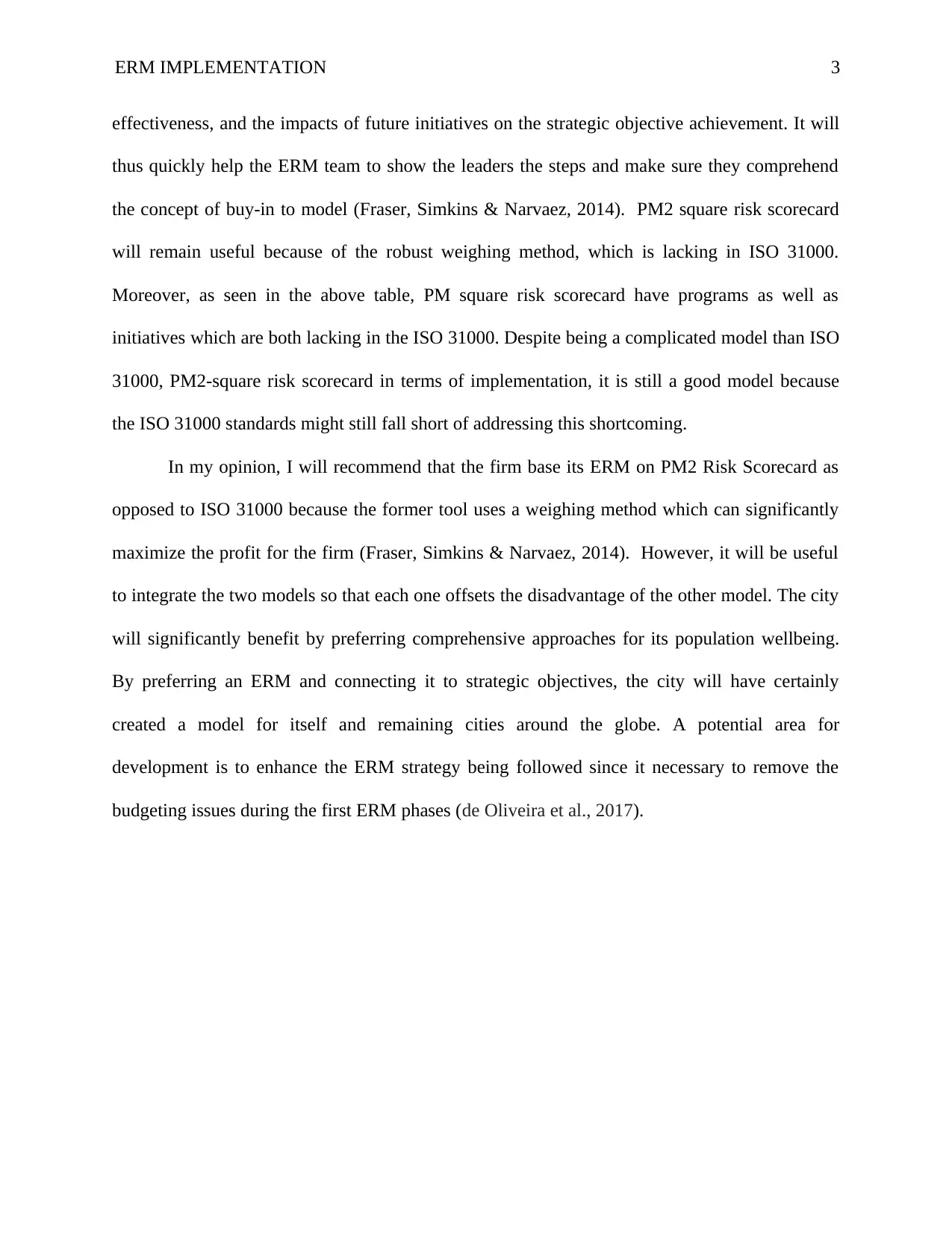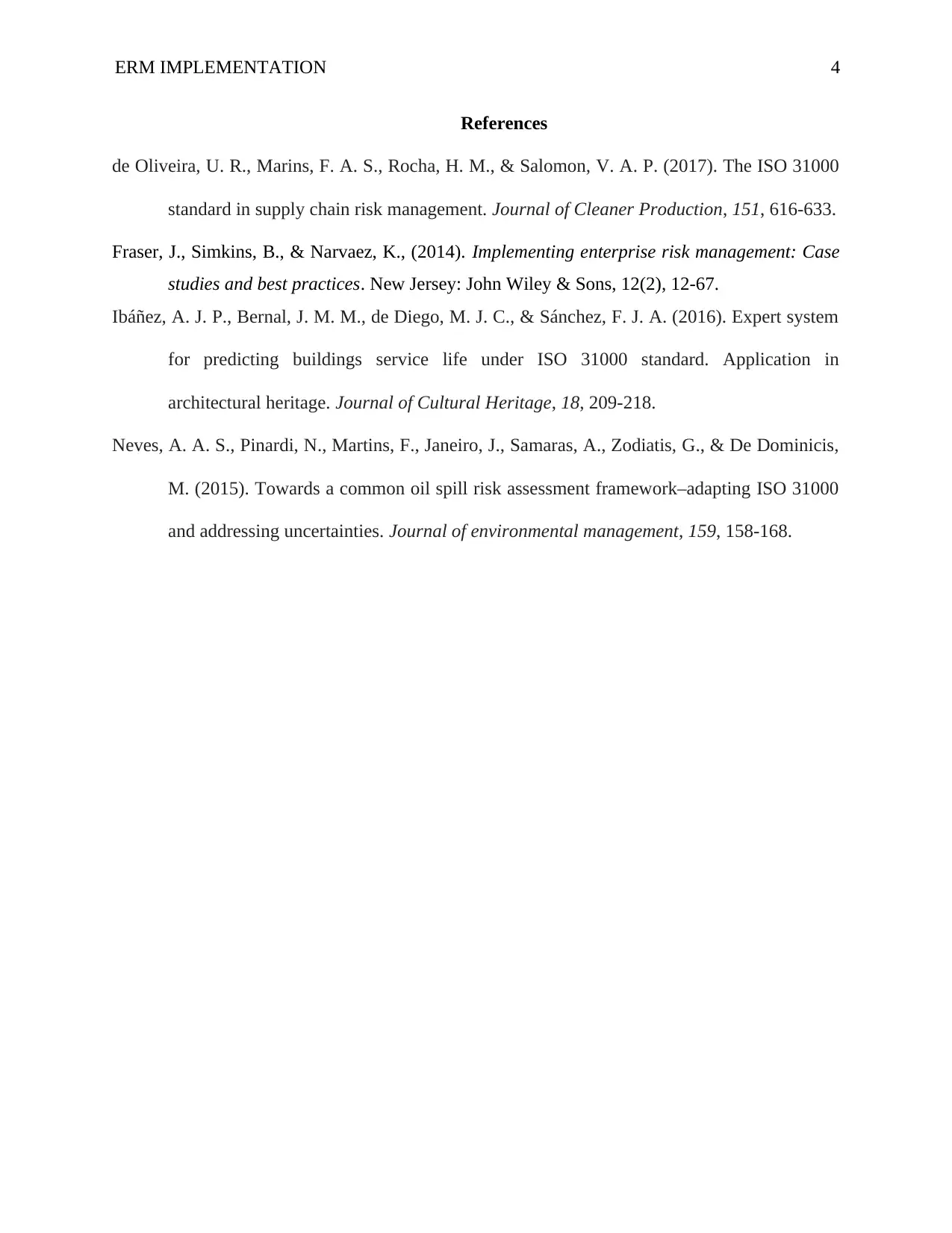ITS 835: Comparative Analysis of ERM Implementation Models
VerifiedAdded on 2022/11/14
|4
|773
|137
Report
AI Summary
This report delves into the realm of Enterprise Risk Management (ERM), specifically examining the implementation of PM2 Risk Scorecard and ISO 31000. It argues for the adoption of PM2 Risk Scorecard due to its capacity to introduce novel initiatives and its robust weighing method, which ISO 31000 lacks. The report highlights the limitations of ISO 31000, particularly its inability to support programs and initiatives crucial for organizations with diverse talents. A comparative analysis is presented, showcasing the advantages of PM2 in terms of risk comparison, program effectiveness, and the impact of initiatives on strategic objectives. The report also suggests integrating both models to leverage their respective strengths. The context includes a case study of the City of Edmonton, which highlights the importance of ERM in linking strategic objectives and the need for comprehensive approaches for population well-being. The report emphasizes the need to remove budgeting issues during the initial ERM phases and the importance of a well-defined implementation process.
1 out of 4





![[object Object]](/_next/static/media/star-bottom.7253800d.svg)